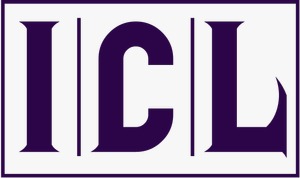Critical discourse analysis and India occupied Kashmir issue
Analysis of tweets of premiers of Pakistan and India (2019)
Keywords:
Social media political discourse, rhetorical devices, seven building tasks of language, Kashmir IssueAbstract
Language is a powerful medium of communication which is significantly used by political leaders to govern over the people. Political leaders use language as an instrument to gain dominance and power by influencing political, economic, social and cultural practices. The aim of this research was to explore and identify rhetorical devices in social media political discourse. The qualitative methodology was adopted to identify rhetorical devices in the tweets of Prime Minister Imran Khan and Prime Minister Narendra Modi. Rhetorical devices are mainly used in political discourse. Political actors employ various rhetorical devices to persuade the public for particular political objectives. Fifteen tweets of both each Prime Minister were analyzed that were related to Indian Occupied Kashmir (2019). The data was in the form of tweets that were taken from verified accounts of both the Prime Ministers. The study examined social media political discourse by applying Paul Gee Model of Seven Building Tasks of Language. The rhetorical devices were identified through this model of critical discourse analysis. The study revealed that which rhetorical devices were used by both the Prime Ministers to discuss the Kashmir issue on social media platform. It revealed that how Prime Minister Imran Khan raised voice against the Indian violence in Kashmir and for the freedom of Kashmiri Muslims and how Indian Prime Ministers used rhetorical devices to glorify the annexation of Kashmir with India. The research found that some rhetorical devices were significantly used by both the Prime Ministers such as amplification, repetition, allusion, patho and logo. The study explored that Prime Minister Imran Khan used rhetorical devices to highlight the Kashmir issue at international level and to raise voice for the freedom of Kashmir from Indian annexation, whereas, Prime Minister Narendra Modi emphasized on making friendly relations with Kashmir and their collective socio-economic development.
Downloads
References
Brown, G., Brown, G. D., Brown, G. R., Gillian, B., & Yule, G. (1983). Discourse analysis.
Cambridge university press.
Van Dijk, T. A. (1997). What is political discourse analysis. Belgian journal of linguistics, 11(1),
-52.
Van Dijk, T. A. (2001). 18 Critical discourse analysis. The handbook of discourse analysis, 349-
Allen, W. (2007). Australian political discourse: Pronominal choice in campaign speeches.
Kushin, M. J., & Kitchener, K. (2009). Getting political on social network sites: Exploring
online political discourse on Facebook. First Monday, 14(11).
Gee, J. P. (2010). How to do Discourse Analysis: A Toolkit: A Toolkit. Routledge.
Adjei-Fobi, C. K. (2011). A rhetorical analysis of political discourse: a comparative study of the
use of metaphor in the speeches of Nkrumah and Rawlings (Doctoral dissertation,
University of Ghana).
Fairclough, N. (2013). Critical discourse analysis: The critical study of language. Routledge.
Fairclough, I., & Fairclough, N. (2013). Political discourse analysis: A method for advanced
students. Routledge.
Ahmed, S., & Skoric, M. M. (2014, January). My name is Khan: the use of Twitter in the campaign
for 2013 Pakistan General Election. In 2014 47th Hawaii International Conference on
System Sciences (pp. 2242-2251). IEEE.
Kazemian, B., & Zhou, Q. (2015). A Rhetorical Identification Analysis of English Political Public
Speaking: John F. Kennedy's Inaugural Address. International Journal of Language and
Linguistics. Special Issue: Critical Discourse Analysis, Rhetoric, and Grammatical
Metaphor in Political and Advertisement Discourses, 4(1-1), 10-16.
Sahrish & Khadija . (2019). A Critique of Rhetorical Devices in Selective Political
Discourse . Journal of Politics and International Studies , 5 (2), 155-171
Downloads
Published
How to Cite
Issue
Section
License
Copyright (c) 2021 Competitive Linguistic Research Journal

This work is licensed under a Creative Commons Attribution-NonCommercial-NoDerivatives 4.0 International License.


